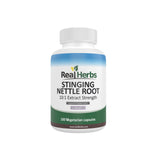Can You Eat Stinging Nettle Leaves?
Have you ever wondered if those pesky stinging nettles that you encounter while hiking or gardening are actually edible? Stinging nettles, known for their painful stings upon contact, might surprise you with their culinary and medicinal potential. In this article, we'll explore whether you can eat stinging nettle leaves and delve into their nutritional value, historical uses, benefits, risks, and even some delicious recipes.
Stinging nettles, scientifically known as Urtica dioica, are perennial plants with serrated leaves and tiny, hair-like structures on their stems and leaves that deliver a painful sting when touched. They grow in various regions around the world and are often found in meadows, woods, and alongside riverbanks.
Stinging nettle leaves are a nutritional powerhouse. They are rich in vitamins such as A, C, and K, and minerals like iron, calcium, and magnesium. Additionally, they contain valuable phytochemicals like chlorophyll and flavonoids.
Throughout history, stinging nettles have been used for food and medicine. Ancient Romans consumed nettles for their purported health benefits. In European cuisines, they have been used in soups, teas, and as a filling for pies.
Research suggests that stinging nettles may have anti-inflammatory, antioxidant, and diuretic properties. They have been explored for their potential in managing conditions such as allergies, arthritis, and urinary issues.
While stinging nettles offer numerous benefits, they can also pose risks. Some individuals may be allergic to nettles or experience skin irritation upon contact. It's crucial to handle them with care and consider potential interactions with medications.
Interested in trying stinging nettles in your kitchen? Here are two simple recipes to get you started:
-
Nettle Soup: A classic way to enjoy stinging nettles, this soup combines the leaves with potatoes, onions, and broth for a hearty and nutritious meal.
-
Nettle Pesto: Create a flavorful pesto by blending nettles with garlic, olive oil, nuts, and Parmesan cheese. Serve it over pasta or spread it on toast.
If you're keen on foraging for stinging nettles, look for them in spring or early summer when they are young and tender. They are often found in damp, shaded areas. Remember to wear gloves and use scissors to avoid getting stung.
Conclusion:
So, can you eat stinging nettle leaves? The answer is a resounding yes! Stinging nettles offer a wealth of nutritional benefits and can be incorporated into your diet in various delicious ways. However, it's essential to be aware of potential risks and take precautions when handling them.












